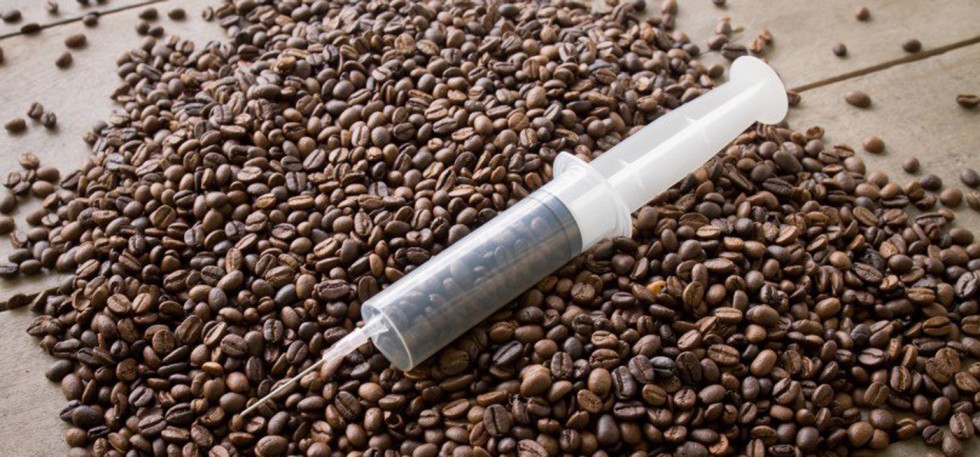Introduction
With the rapid advancement of technology and changing consumer preferences, the online casino industry has emerged as a prominent and thriving sector in India. Online casinos offer a convenient and accessible platform for players to enjoy a wide range of casino games from the comfort of their homes. In this article, we will delve into the current state, growth, and impact of the online casino industry in India, shedding light on the legal landscape, popular games, notable success stories, challenges faced by the industry, and its influence on the economy and job market.
Legal Landscape and Regulatory Framework
The online casino industry in India operates within a complex legal framework that varies across different states. While the legality of online gambling remains a subject of debate, there is no specific law in India that expressly prohibits online casinos. This has given a rise in online casinos accepting Indian players. However, various state laws and regulations govern gambling activities. The Public Gambling Act of 1867 is the central legislation concerning gambling in India, but it predates the digital era and does not specifically address online gambling.
To navigate the legal landscape, online casinos in India often obtain licenses from offshore jurisdictions such as Malta, Gibraltar, or the Isle of Man. These licenses provide a level of legitimacy and help ensure fair play and player protection. However, some states have stricter regulations, and online casinos need to comply with local laws to operate in those regions.
In recent years, there have been discussions and debates surrounding the regulation of online gambling in India. Some states have initiated efforts to formulate specific laws and regulations for online gambling, while others have proposed outright bans. Additionally, notable court cases and legal developments have shaped the landscape, providing insights into the legal aspects of the industry.
According to statistical data, there has been a significant increase in the number of licensed online casinos operating in India. The market value of the online casino industry is projected to reach impressive figures, reflecting the growing demand for online gambling platforms among Indian players.
Popularity and Growth Factors
The online casino industry has witnessed a remarkable surge in popularity among Indian players, fueled by several key factors. Firstly, the convenience factor cannot be overlooked. Online casinos allow players to enjoy their favorite games at any time and from anywhere, eliminating the need to visit physical casinos. With the widespread availability of smartphones and high-speed internet connections, players can access online casinos with ease, making it a preferred choice for many.
Accessibility is another crucial aspect contributing to the growth of online casinos in India. Traditional land-based casinos may be limited to certain locations, but online casinos break those geographical barriers. Whether someone is in a metropolitan city or a remote town, as long as they have an internet connection, they can explore the world of online gambling. This accessibility has opened up a vast market for online casinos, reaching players who previously had limited options for casino entertainment.
Technological advancements have played a significant role in shaping the online casino landscape in India. The availability of secure payment gateways and the integration of cutting-edge encryption technologies ensure safe and seamless transactions, alleviating concerns about financial security. Additionally, the development of high-quality graphics, immersive sound effects, and engaging gameplay experiences have enhanced the overall user experience, replicating the excitement of a physical casino.
Statistics indicate a substantial growth in the number of active online casino players in India. The Indian market has shown an upward trajectory, with more individuals embracing online gambling as a form of entertainment. A diverse range of demographics, including younger players and professionals, are becoming increasingly interested in online casinos, contributing to the industry’s growth.
Notable Success Stories
The Indian online casino industry has witnessed several notable success stories, reflecting both the potential for growth and the achievements within the sector. One such success story is the rise of homegrown Indian online casinos. These casinos, developed by Indian entrepreneurs and gaming enthusiasts, have successfully carved a niche in the industry by catering specifically to the Indian market. Through localized themes, culturally relevant games, and customized experiences, these Indian online casinos have attracted a loyal player base.
In addition to the success of Indian online casinos, there have been remarkable achievements by Indian players in the online gambling arena. Stories of Indian players achieving significant wins and life-changing jackpots have garnered attention and contributed to the popularity of online casinos. These success stories not only highlight individual triumphs but also showcase the potential for players to experience thrilling and rewarding moments within the online casino realm.
One such notable success story is the record-breaking win by an Indian player on a popular progressive jackpot slot game. The player, hailing from Mumbai, spun the reels and hit the coveted jackpot, securing a life-altering sum. This achievement not only brought recognition to the player but also put the Indian online casino industry in the global spotlight.
Challenges Faced by the Industry
While the online casino industry in India continues to experience growth, it is not without its fair share of challenges. One of the primary obstacles is the regulatory landscape. The absence of comprehensive and uniform regulations at the national level creates a fragmented and uncertain environment for online casinos. This lack of clarity leads to varying interpretations of the law and potential conflicts between state and central regulations.
Public perception of online gambling also poses a challenge. Despite the growing acceptance of online casinos among players, there remains a segment of society that views gambling as morally objectionable. Concerns about addiction, potential for fraudulent practices, and social consequences are raised by critics of the industry. Bridging the gap between public perception and the actual operations of licensed and regulated online casinos becomes crucial to ensure a balanced perspective.
Furthermore, the online casino industry in India faces stiff competition from international operators. While Indian online casinos have made significant strides, established global brands still dominate a considerable portion of the market. These international operators often bring extensive experience, substantial resources, and a diverse range of games and services. Local operators must continuously innovate and adapt to stay competitive in this rapidly evolving landscape.
To address these challenges, industry stakeholders and policymakers are actively exploring opportunities for effective regulation and oversight. Some states have taken steps towards formulating specific laws and regulations that strike a balance between player protection, responsible gambling practices, and economic benefits. These efforts aim to create a secure and transparent environment that addresses the concerns surrounding online gambling.
Influence on the Economy and Job Market
The online casino industry’s impact on the Indian economy extends beyond entertainment and player experiences. It has emerged as a significant contributor to job creation and economic growth. The industry’s expansion has led to the establishment of numerous online casino operators, each requiring a range of skilled professionals to manage operations, develop software platforms, and provide customer support services.
The growing demand for skilled professionals in the online casino sector has created employment opportunities across various disciplines. Job roles encompass areas such as game development, software engineering, marketing, customer service, and regulatory compliance. As the industry continues to flourish, it not only provides direct employment but also supports ancillary sectors such as technology providers, payment processors, and marketing agencies.
In terms of economic impact, the online casino industry contributes to tax revenues, both at the state and national levels. Licensed operators pay taxes and fees, bolstering government coffers and supporting public welfare initiatives. Additionally, the industry stimulates other sectors, such as technology and payment processing, creating a ripple effect in the economy.
Statistics reveal the positive economic influence of the online casino industry. The sector’s growth and its interconnectedness with related industries generate a substantial economic footprint. Moreover, the industry’s contribution to tax revenues plays a vital role in funding infrastructure development, social welfare programs, and other public initiatives.
Responsible Gambling Practices and Player Protection
As the online casino industry expands in India, ensuring responsible gambling practices and player protection becomes paramount. Recognizing the potential risks associated with gambling, both operators and regulatory bodies are taking proactive measures to promote responsible behavior and provide a safe environment for players.
Responsible gambling initiatives include the implementation of strict age verification procedures to prevent underage gambling. Online casinos often require players to provide identification documents to validate their age and identity, thereby ensuring compliance with legal requirements.
Furthermore, responsible gambling features such as self-exclusion options, deposit limits, and cooling-off periods are being integrated into online casino platforms. These tools empower players to maintain control over their gambling activities and seek assistance when needed. Online casinos are also partnering with organizations that specialize in gambling addiction prevention and treatment, offering helplines and support services to players facing gambling-related challenges.
Player protection measures extend beyond responsible gambling practices. Licensed online casinos employ robust security protocols to safeguard player data and financial transactions. Encryption technologies, secure payment gateways, and stringent privacy policies ensure that sensitive information remains confidential and protected from unauthorized access.
Future Prospects and Regulatory Developments
The online casino industry in India continues to evolve, driven by advancements in technology and changing consumer preferences. As the market matures, it is expected that regulatory frameworks will become clearer and more comprehensive. States that currently have ambiguous or restrictive regulations may follow the examples set by progressive states that have embraced online gambling.
Industry experts anticipate continued growth in the online casino sector, driven by factors such as increasing internet penetration, rising disposable incomes, and a growing acceptance of online entertainment. The development of innovative technologies like virtual reality and augmented reality may further enhance the online casino experience, creating immersive and engaging gameplay environments.
Moreover, international collaborations and partnerships between Indian and global online casino operators are on the rise. These collaborations enable Indian players to access a wider range of games and services, while simultaneously fostering knowledge exchange and best practices within the industry.
Conclusion
In conclusion, the online casino industry in India has experienced remarkable growth and has a significant impact on the economy and job market. The legal landscape continues to evolve, with ongoing discussions and regulatory developments shaping the industry’s future. Responsible gambling practices, player protection measures, and technological advancements contribute to a safer and more enjoyable gaming experience.
As the industry continues to flourish, it is crucial for all stakeholders, including operators, regulators, and players, to work together to ensure a sustainable and responsible online casino environment. By fostering innovation, embracing player-centric approaches, and addressing challenges, the online casino industry in India has the potential to thrive while upholding the highest standards of integrity and player welfare.




















